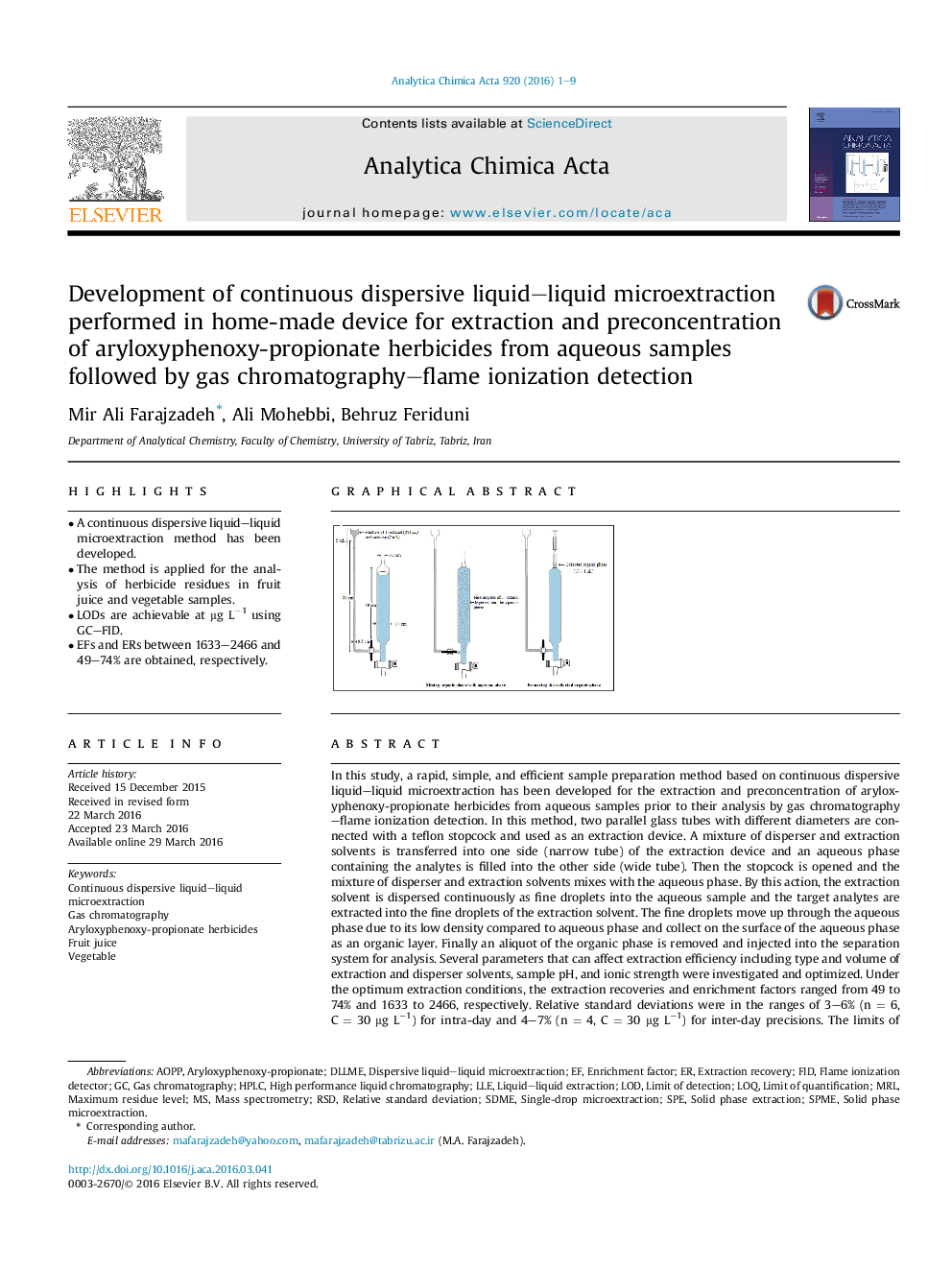| کد مقاله | کد نشریه | سال انتشار | مقاله انگلیسی | نسخه تمام متن |
|---|---|---|---|---|
| 1162816 | 1490912 | 2016 | 9 صفحه PDF | دانلود رایگان |
• A continuous dispersive liquid–liquid microextraction method has been developed.
• The method is applied for the analysis of herbicide residues in fruit juice and vegetable samples.
• LODs are achievable at μg L−1 using GC–FID.
• EFs and ERs between 1633–2466 and 49–74% are obtained, respectively.
In this study, a rapid, simple, and efficient sample preparation method based on continuous dispersive liquid–liquid microextraction has been developed for the extraction and preconcentration of aryloxyphenoxy-propionate herbicides from aqueous samples prior to their analysis by gas chromatography–flame ionization detection. In this method, two parallel glass tubes with different diameters are connected with a teflon stopcock and used as an extraction device. A mixture of disperser and extraction solvents is transferred into one side (narrow tube) of the extraction device and an aqueous phase containing the analytes is filled into the other side (wide tube). Then the stopcock is opened and the mixture of disperser and extraction solvents mixes with the aqueous phase. By this action, the extraction solvent is dispersed continuously as fine droplets into the aqueous sample and the target analytes are extracted into the fine droplets of the extraction solvent. The fine droplets move up through the aqueous phase due to its low density compared to aqueous phase and collect on the surface of the aqueous phase as an organic layer. Finally an aliquot of the organic phase is removed and injected into the separation system for analysis. Several parameters that can affect extraction efficiency including type and volume of extraction and disperser solvents, sample pH, and ionic strength were investigated and optimized. Under the optimum extraction conditions, the extraction recoveries and enrichment factors ranged from 49 to 74% and 1633 to 2466, respectively. Relative standard deviations were in the ranges of 3–6% (n = 6, C = 30 μg L−1) for intra-day and 4–7% (n = 4, C = 30 μg L−1) for inter-day precisions. The limits of detection were in the range of 0.20–0.86 μg L−1. Finally the proposed method was successfully applied to determine the target herbicides in fruit juice and vegetable samples.
Figure optionsDownload as PowerPoint slide
Journal: Analytica Chimica Acta - Volume 920, 12 May 2016, Pages 1–9
